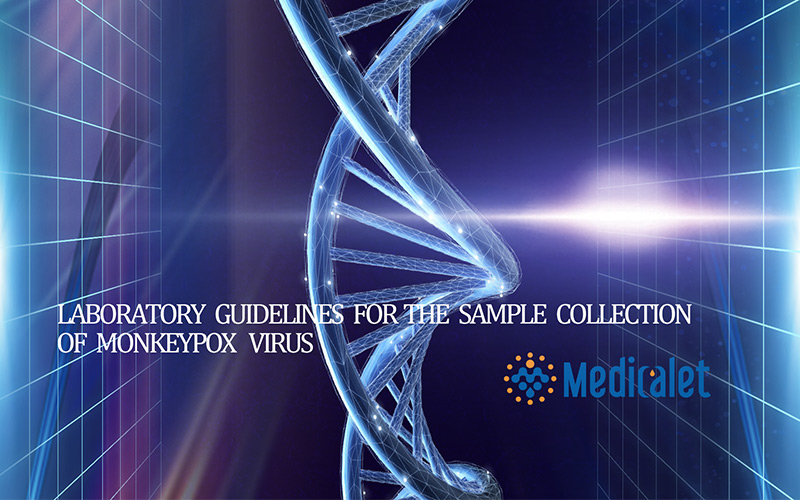
SAMPLE COLLECTION AND MANAGEMENT
Safety procedures
Use of adequate standard operating procedures (SOPs) must be ensured, and laboratory personnel must be trained for appropriate use of personal protective equipment (PPE) including disposable antifluid gown, latex gloves, goggles or full-face cover, lab hat, and shoe covers, and for the elimination of used PPE. Additionally, staff should be appropriately trained for specimen collection, storage, packaging, and transport.
Biological risk management
Measures should be taken to minimize the risk of laboratory transmission based on a risk assessment at institutional level when testing routine clinical specimens from confirmed or suspected monkeypox patients.These may include limiting the number of staff testing specimens only to staff with proven competency, wearing appropriate PPE, using rigorously applied standard precautions, using effective disinfectants (which include quaternary ammonium compounds and 0.5% (or 200ppm) bleach (0.5%), and avoiding any
procedures that could generate aerosols. Rigorous adherence to infection prevention and control guidelines must be ensured during specimen
It is recommended that all manipulations of specimens originating from suspected, probable or confirmed cases of monkeypox in the laboratory be conducted according to a risk-based approach. Each laboratory should conduct an institutional risk assessment. When manipulating biological specimens, core biosafety requirements, similar to those previously referred to as biosafety level 2, must be met and heightened control measures should be applied based on local risk assessment. MPXV may be contracted at the lab during the specimen processing stage from contaminated material or inadequate lab practices. Therefore, heightened biosafety measures are recommended in addition to the core requirements, including the following for the purpose of clinical testing without virus propagation:
• Specimens from patients with suspected MPXV infection must be handled in a reviewed, or certified Class II biosafety cabinet, prior to sample inactivation. Properly inactivated specimens do not require a biosafety cabinet.
• Laboratory personnel should wear appropriate PPE, especially for handling specimens before inactivation.
• Where use of a centrifuge is required for a procedure, safety cups or sealed rotors should be used. Additional control measures should be considered for specific procedures, including aerosol-generating procedures, according to the local risk assessment. For more information on core biosafety requirements and heightened control measures, please see the fourth edition of the WHO Biosafety Manual.
Laboratory Diagnosis of Monkeypox 3
Types of samples
The recommended specimen type for laboratory confirmation of monkeypox is skin lesion material, including:
• Swabs of lesion surface and/or exudate,
• Roofs from more than one lesion, or
• Lesion crusts.
Lesions swabs, crusts and vesicular fluids should not be mixed in the same tube. Swab the lesion vigorously using Dacron or polyester flocked swabs, to ensure adequate viral DNA is
collected. Both dry swabs and swabs placed in viral transport media (VTM) can be used. Two lesions of the same type should be collected in one single tube, preferably from different locations on the body and which differ in appearance.
In addition to a lesion specimen, the collection of an oropharyngeal swab is encouraged. However, data on the accuracy of this specimen type for diagnosis is limited for monkeypox, therefore a negative throat swab specimen should be interpreted with caution. Because the current outbreak is still under investigation, collection of additional
specimen types for research purposes can be considered if allowed by the appropriate ethical review board, and there is sufficient laboratory and medical expertise for their
safe collection, handling, and storage. These may include urine, semen, rectal and/or genital swab on indication based on clinical presentation including location of lesions.
